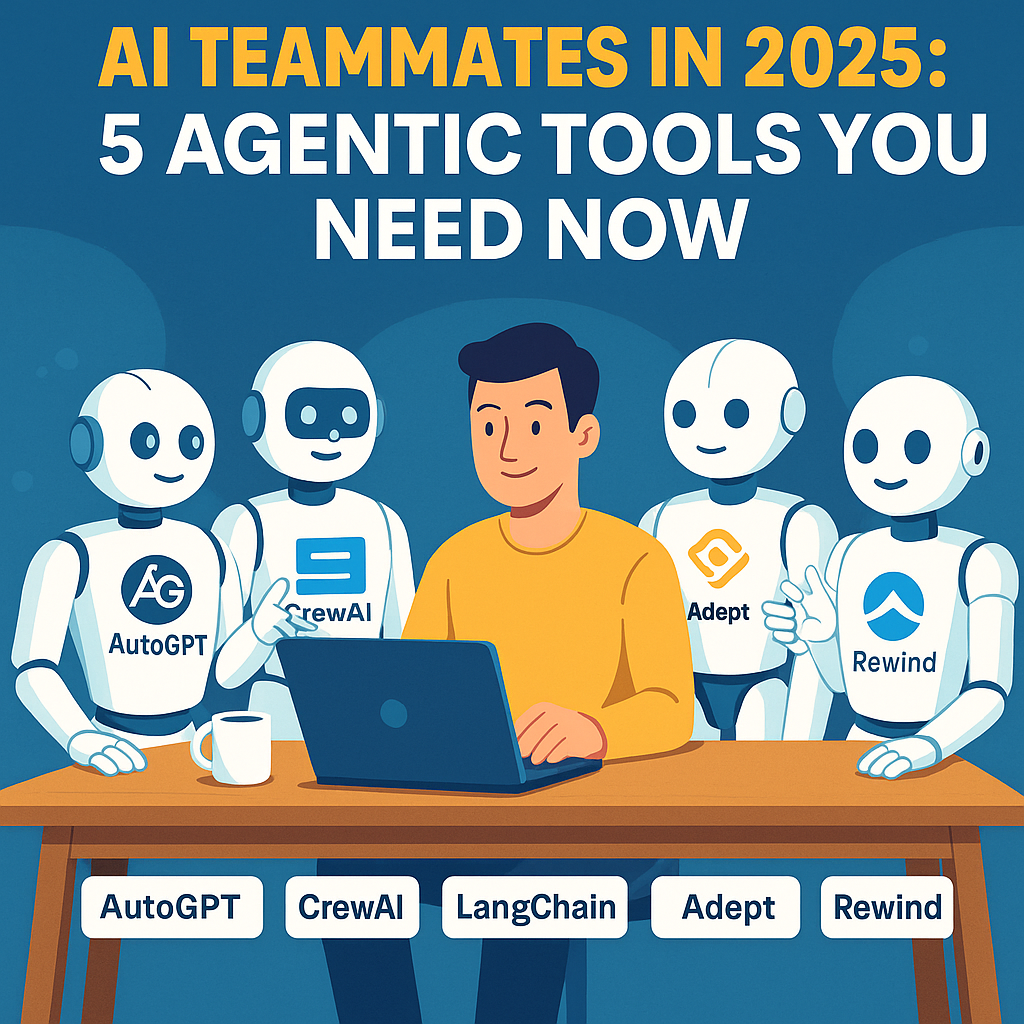AI in 2025 is no longer just about generating text on demand. With the rise of agentic AI, tools are shifting from passive assistants into active teammates. These platforms can plan, reason, and execute tasks independently, helping you scale work without micromanaging every step.
Whether you’re a creator, freelancer, or business professional, adopting these tools is like hiring a digital team member—minus the overhead. Let’s explore five agentic AI tools in 2025 that you can start using today.
1. AutoGPT (Open-Source Autonomous Agent)
AutoGPT has been one of the most popular open-source projects pushing the boundaries of agentic AI. Unlike traditional copilots, AutoGPT can loop through reasoning steps on its own to plan, research, and execute tasks.
- Best For: Experimenters, developers, and tech-savvy creators.
- Example Use: Set AutoGPT to “research the top trends in AI marketing and draft a blog plan” — it will break the goal into smaller subtasks and deliver a structured result.
👉 To see how prompts can boost autonomy, read Prompt Chaining Made Easy.
2. CrewAI (Multi-Agent Collaboration)
CrewAI is designed around the idea that AI agents work better as a team. You can assign roles—like researcher, writer, or strategist—and CrewAI agents collaborate to complete complex workflows.
- Best For: Teams and solo founders who want AI to manage projects end-to-end.
- Example Use: Have one agent collect research, another draft content, and a third fact-check—all working in sync.
👉 Pair this with How to Use GPTs Like a Pro: 5 Role-Based Prompts That Work for maximum effect.
3. LangChain Agents
LangChain has become the backbone of many agentic AI systems. Its agents let you connect LLMs to external tools—APIs, databases, and even browsers—so the AI can decide when and how to use them.
- Best For: Developers and no-code builders creating advanced workflows.
- Example Use: An agent that queries a financial API, analyzes the data, and generates a custom report inside Google Sheets.
👉 Combine this with How to Build Complex Workflows with AI Copilots and Zapier for powerful automations.
4. Adept AI (Action-Oriented Agents)
Adept is focused on creating AI that doesn’t just talk—it takes action inside real apps. Their agents can interact with software like CRMs, spreadsheets, and design tools directly, working almost like a human teammate clicking and typing alongside you.
- Best For: Professionals who juggle multiple apps daily.
- Example Use: Automating lead entry into Salesforce, cleaning data in Excel, and sending follow-up emails—without human input.
👉 For email-specific workflows, see How to Automate Email Responses with AI (Free Tools).
5. Rewind AI (Personal Memory Agent)
Rewind AI acts as a personal memory copilot. It records and indexes everything you see, say, or hear on your devices, then lets you search and recall it instantly. In 2025, its agent features allow proactive suggestions based on your past activity.
- Best For: Knowledge workers, researchers, and busy professionals.
- Example Use: Forget a client detail? Ask Rewind to retrieve it instantly from past Zoom calls, documents, or emails.
👉 To boost productivity even further, complement this with 10 Expert-Recommended Chrome Extensions.
📌 How to Get Started with Agentic AI Tools
Transitioning from traditional copilots to agentic AI is a mindset shift. Start by:
- Defining clear goals for your AI teammates.
- Testing one agent on a single workflow.
- Expanding gradually—integrating with tools like Notion or Trello (comparison guide here).
Final Thoughts
Agentic AI tools in 2025 are more than apps — they’re digital teammates capable of reasoning, acting, and collaborating. Whether it’s AutoGPT experimenting with autonomy, CrewAI managing multiple agents, or Rewind AI extending your memory, these platforms are paving the way for a future where work feels more like delegation than repetition.
Now’s the time to start small, adopt one, and see how much lighter your workload becomes.



